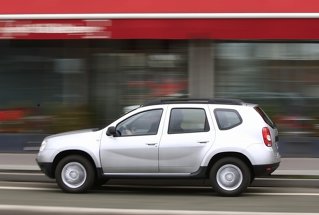www.zfenglish.com - Last update 01:12
Dacia Duster Drives Romanian Economy Back To Growth
05.16.2011
The growth of Romania's GDP in the first quarter of this year, eagerly awaited by the government, was driven by the increase in sales of the Dacia Duster SUV in the first three months of this year.
In the first quarter of this year, the Dacia SUV, the most expensive model ever produced in the Mioveni plant, has come to account for half of the output of the local manufacturer, according to statistics of the Romanian association of Automotive Manufacturers and Importers (APIA).
Dacia's overall exports in the first quarter amounted to around EUR1 billion, some 10% of Romania's total exports. With exports set to account for around 30%-35% of the Gross Domestic Product, around 1% to 1.5% of GDP will be accounted for by the Duster SUV.
The Romanian economy is currently over-reliant on just a few sectors, with its growth being tightly connected to the growth of sectors such as the auto sector and of companies such as Automobile Dacia and Petrom, the biggest local company.
The tight connection between the evolution of Automobile Dacia and the local economy has led to an economic growth this time, but in 2009, when the Mioveni carmaker suspended production both in Romania and in Western Europe, before the launch of car scrap schemes, it brought about a decline of the GDP.
According to data from the Romanian statistics institute (INS), cars and equipment accounted for nearly 43% of the overall EUR11 billion exports in the first quarter, i.e. the equivalent of EUR4.7 billion. The second-biggest exports were manufactured products, with nearly 33%. Chemical products and mineral fuels each accounted for around 6%.
Nicolaie Alexandru-Chidesciuc, chief economist of ING Bank, says the automotive sector, which was more reliant on exports, had the biggest contribution to the economic recovery.
"The growth as far as economy is concerned came from industry, i.e. largely from exports. Auto exports accounted for the biggest share, and this is not just cars, but also subassemblies. Second was electric equipment, which had a very good performance, while third was export of oil-based products," Chidesciuc says.
So, surprisingly, the higher price of fuels helped the economy recover because it saw a decline in domestic consumption, putting producers in a position to export more, including in terms of volume. In addition, revenues from exported products were also higher, in direct connection with the prices.
The statistics institute is set to release a detailed structure of the GDP on June 8, and only then it will be apparent which sectors have contributed to the economic recovery and which remained on a downward path.
Chidesciuc says there was probably also a slight growth in domestic consumption in the first quarter.
"We had very low interest rates on leu-denominated loans and a rather low exchange rate, which probably helped consumption in the first quarter. Not necessarily through new loans, because sales were weak, but clients had less to pay on ongoing loans," Chidesciuc says.

